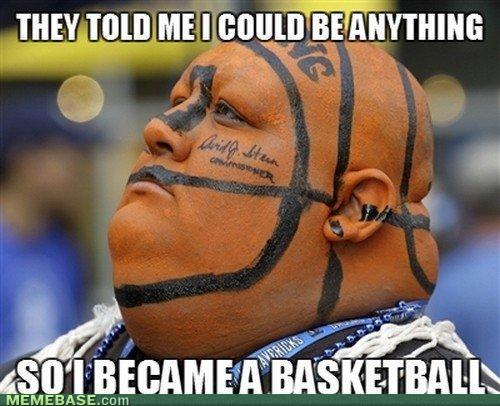College Basketball Recruiting Trends 2025

Looking to play college basketball? The recruiting game has changed, and I’m here to show you how the big dogs are hunting for talent in 2025.
Gone are the days when coaches spent most of their time at high school games scouting freshmen. Now they’re scrolling through the transfer portal on their phones during timeouts and booking flights to Europe faster than you can say “one-and-done.”
Let’s dive into how college basketball recruiting actually works these days – from the transfer portal takeover to international scouting and everything in between.
The New College Basketball Recruiting Landscape
Transfer Portal: College Basketball’s Free Agency

The transfer portal has become an absolute game-changer. It’s basically turned into college basketball’s version of free agency, and coaches are all in.
Why are coaches obsessing over transfers instead of high schoolers?
- Immediate impact – Transfers already know how to handle college workloads, late nights, and Division I competition
- Physical maturity – They’ve spent years in college strength programs
- Mental development – They understand defensive rotations and have adapted to the speed of the college game
“We start evaluating the portal while we’re still in season,” one Power 5 coach told me. “By March, we’re already deep into portal recruitment.”
This shift means many programs are deprioritizing high school recruitment until they see what they can get from the portal. Coaches are literally falling behind on watching high school games because they’re busy tracking transfer possibilities.
Research from NCAA shows that teams with higher percentages of transfer players have been increasingly successful in tournament play, reinforcing why programs are leaning this direction.
International Players: The Global Talent Pipeline

If you thought the transfer portal was changing things, wait until you see what’s happening with international recruiting.
About 15% of NCAA tournament players now come from outside the US, representing 65+ countries. That’s not a coincidence – it’s strategy.
Teams that reach the Final Four consistently feature multiple international players. Why? Because international players often bring:
- Professional experience at younger ages
- Unique skill sets developed in different basketball systems
- Physical maturity from competing against grown men
- Higher basketball IQ from playing in systems that emphasize fundamentals
Look at North Carolina landing 22-year-old Luka Bogavac, who played professionally in Europe before stepping foot on campus. He’s not coming in as a wide-eyed freshman – he’s bringing years of pro experience.
Global Academy basketball data shows international players win approximately 16% more tournament games than teams without global rosters.
Different programs have different international strategies:
- Gonzaga built extensive European scouting networks
- Florida recruits from six+ countries regularly
- Duke targets specific international stars to complement domestic players
Late Recruiting: There’s Always a Spot Somewhere

Don’t have a scholarship offer by the early signing period? Don’t panic!
The reality is that late recruiting is huge, especially in certain divisions. Roster spots open up constantly due to:
- Transfers moving up or down divisions
- Players getting injured
- Academic eligibility issues
- Coaching changes causing decommitments
Division II, NAIA, and junior colleges recruit well into the season. If you’re still looking for a team, here’s what to do:
- Use websites tracking schools with open roster spots
- Contact coaches directly with highlight reels and academic info
- Be open to playing at different division levels
- Leverage social media to showcase your abilities
College recruitment tracking data shows that hundreds of quality players find homes after the traditional signing periods every year.
Beyond the Basics: What Actually Matters in Recruiting
It’s Not Just About Your Highlights
Coaches aren’t just looking at your crossovers and dunks. The recruitment game has evolved, and they’re checking for qualities that indicate success:
- Work ethic – Do you stay after practice?
- Coachability – Can you take criticism without pouting?
- Mental toughness – How do you handle adversity?
- Academic performance – Can you manage classroom responsibilities?
“I’d rather have a slightly less talented player who works his ass off than a five-star who thinks he already knows everything,” one D1 coach told me.
The best programs maintain strong communication through multiple channels – emails, calls, campus visits – building relationships before making commitments.
Research on athletic development consistently shows that these psychological factors predict long-term success better than pure physical ability.
NIL and Revenue Sharing: Follow the Money
Name, Image, and Likeness deals have completely transformed recruitment. Some top prospects choose schools partly based on NIL opportunities.
We’re now seeing NBA-level talent returning to college because they can earn significant money while improving their draft stock. This raises competition for roster spots and influences recruiting strategies across the board.
Programs are increasingly focused on finding players who can contribute immediately rather than long-term projects. It’s a more professionalized college environment than ever before.
How to Position Yourself in Today’s Recruiting Environment

If you want to play college basketball, here’s your game plan based on the current landscape:
- Be visible in multiple ways – Highlight reels, camps, digital platforms
- Consider all divisions – D2, D3, NAIA, and JUCO all offer great basketball
- Develop your whole package – Academics, character, work ethic
- Be open to transfers later – Your first school doesn’t have to be your last
- Showcase adaptability – Coaches want players who can fill multiple roles
The college basketball recruiting world in 2025 requires a multi-faceted approach. It’s not just about being seen by the right coach at the right time anymore – it’s about positioning yourself strategically in a landscape dominated by transfers, international talent, and evolving timelines.
Remember: find the program that offers the best fit athletically, academically, and financially – not just the one with the most Instagram followers or the biggest NIL check. Your college basketball journey is about more than just basketball. It’s about setting yourself up for success in life.

